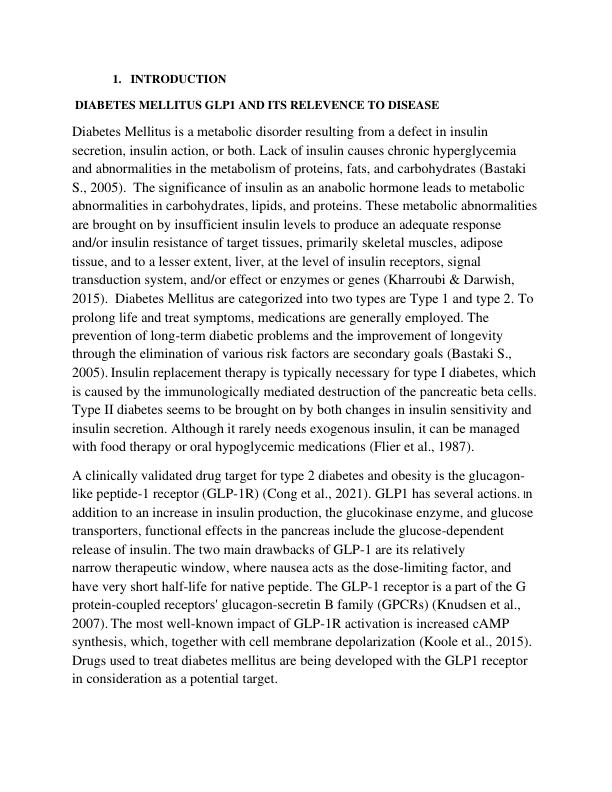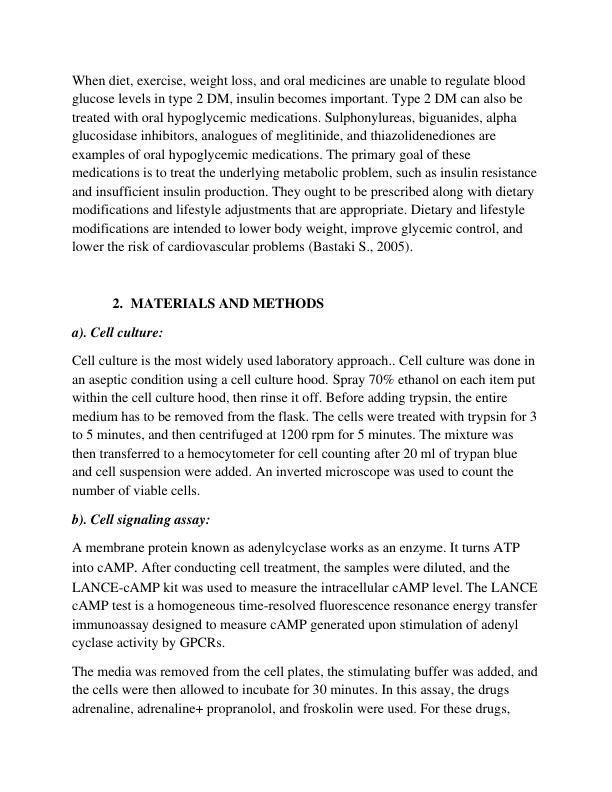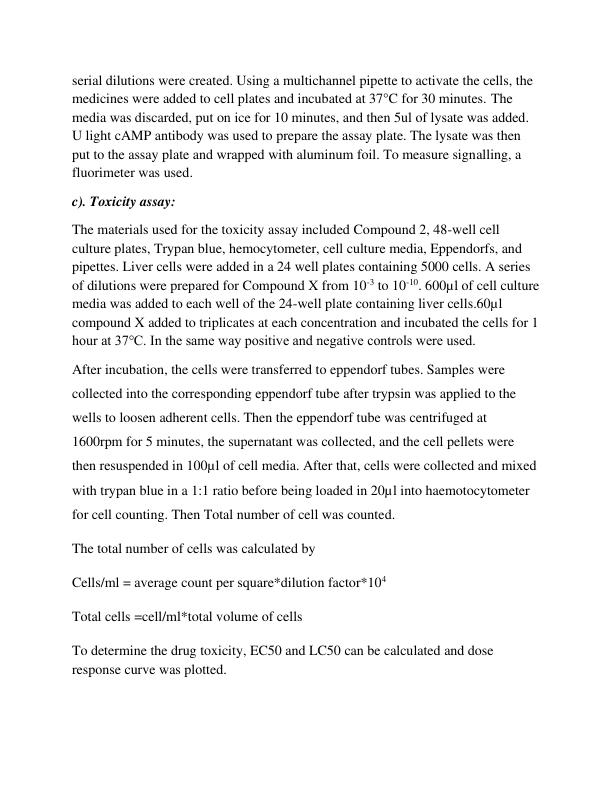CW1 7007 BMS Lab Report on Diabetes mellitus glp1 and its relevence to disease
Coventry University
Research Techniques in Pharmacology and Drug Discovery (7007BMS)
Added on 2023-04-04
About This Document
This is a lab report that discusses diabetes mellitus and GLP-1, a drug target for type 2 diabetes and obesity. The report explains the mechanisms of insulin production and insulin resistance, as well as the different types of medication used to treat diabetes. The report also describes the materials and methods used in a cell culture experiment to measure intracellular cAMP levels and the toxicity of certain compounds. Overall, the report highlights the potential of GLP-1 as a drug target for treating diabetes mellitus.
CW1 7007 BMS Lab Report on Diabetes mellitus glp1 and its relevence to disease
Coventry University
Research Techniques in Pharmacology and Drug Discovery (7007BMS)
Added on 2023-04-04
End of preview
Want to access all the pages? Upload your documents or become a member.




